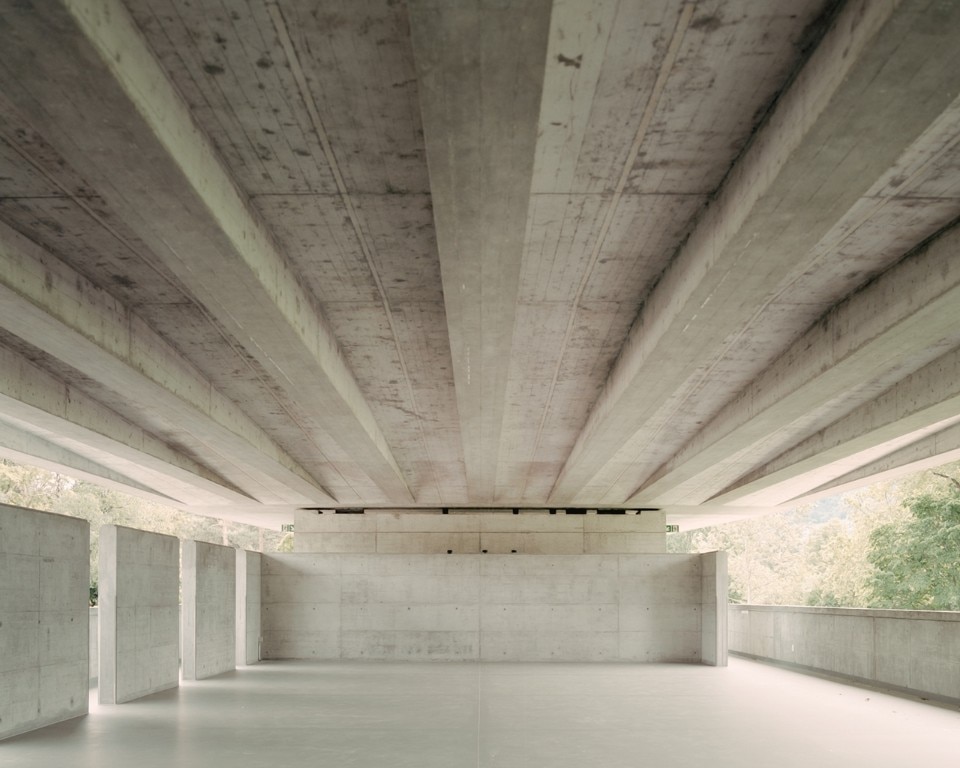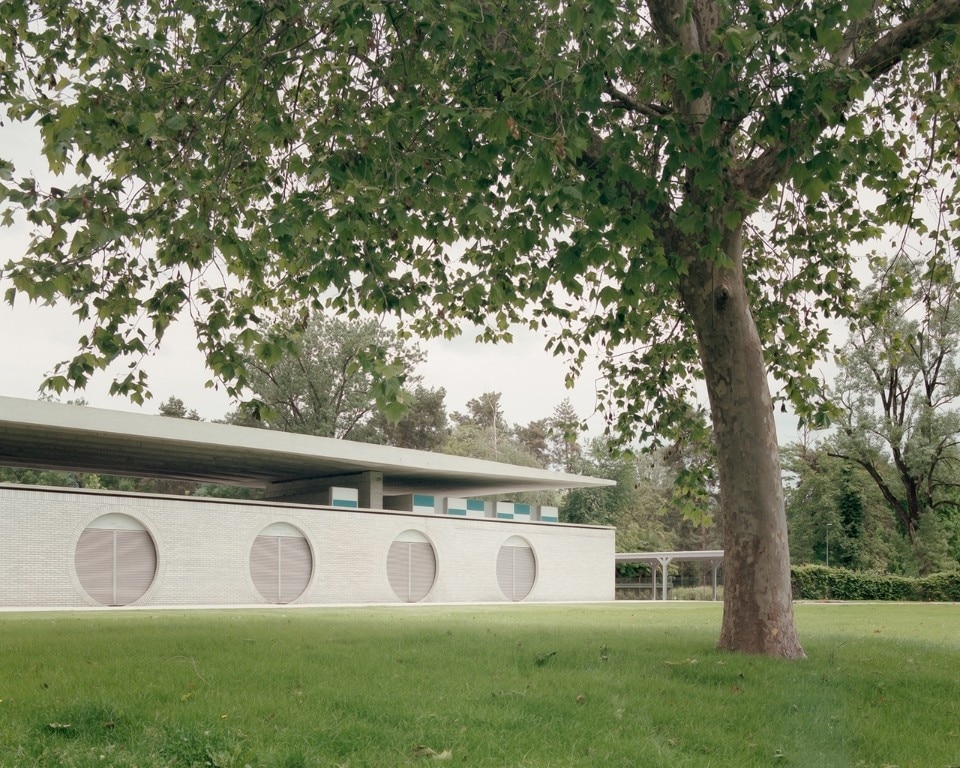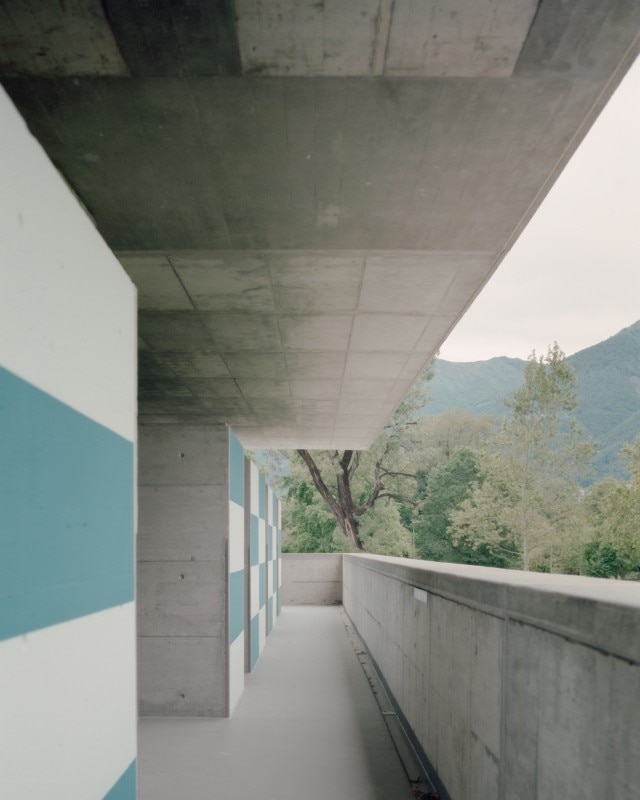The preservation of Modern Architecture is taking an increasing centrality in the current practice, offering the possibility of enhancing the relevant heritage we inherited from the past century. Atelier Rampazzi thus proposes a sensitive design action, capable of not deforming the appearance of the original architecture, through an intervention giving new life to the Lido Patriziale of Ascona, designed in 1986 by Livio Vacchini.
Starting from removing the superfetations that suffocated the original work, the conservation project has brought the image of the architecture back to the original idea of the Ticino-based designer, removing the volumes that had deeply changed the relationship between the built environment and the natural context.
Accordingly, the reinforced concrete volume can return to playing a filter role between the two areas, the lakeshore and the city, giving breathing space to the volume itself. The cement surfaces have been cleaned and repaired, highlighting the most refined elements of the project, such as the ribbed roof or the ground level openings, seeking an approach capable of enhancing Vacchini's concept.

Alongside the external arrangement operations, the conservative process saw a significant modification of interior spaces, which over the years have been the subject of several revisions that often did not consider the refine conception of the work. Here, additions and transformations have therefore acted on those spaces that no longer responded to contemporary needs, from the toilets to the kitchen spaces, bringing the systems up to standard and renewing the 40 cabins. Finally, all the added elements, including furnishings, were designed as elements separate from the original structure, always allowing the layering of time to be read.
The Atelier Rampazzi project thus reminds us of the importance of valorizing a relatively recent heritage with considerable historical and cultural value. Here, the project's action can re-read the core features of the work and show the contemporary value of solutions that revealing the quality of an architecture deserving recognition instead of oblivion.

The Pipe collection, between simplicity and character
The Pipe collection, designed by Busetti Garuti Redaelli for Atmosphera, introduces this year a three-seater sofa.

























